#Gregory McIntosh
Explore tagged Tumblr posts
Photo
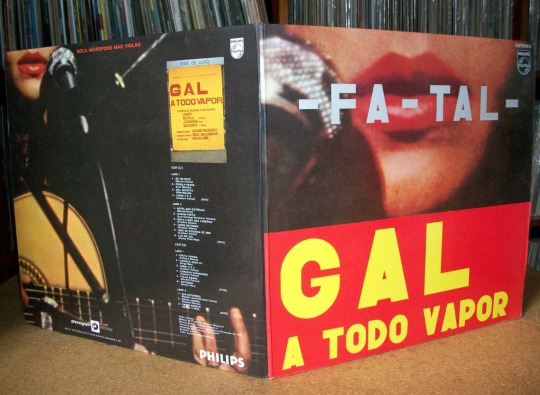

Excerpts from an AllMusic review by Gregory McIntosh.
“ A Todo Vapor is a really fascinating live document of Gal Costa from the early '70s where she proved to be as exciting and diverse on-stage as she was at that time in the studio. The first seven tracks (of 18) feature Costa alone, accompanied by only her own acoustic guitar and the performances are dramatic, intimate, precise, emotional, and stunningly clear.
A Todo Vapor would've been a fine set with only these tracks, but the real treat comes in about halfway through the eight-minute epic, "Vapor Barato," when out of nowhere, her band joins in and turns the slow, intimate descending progression into a scorching lament …. the band is experimental and dynamic -- actually quite mad -- similar to her band on her two self-titled records from 1969. “
https://www.allmusic.com/album/-fa-tal-gal-a-todo-vapor-mw0000607041
(via Discoteca Básica Bizz #132: Gal Costa - Fa-Tal: Gal a Todo Vapor (1971))
4 notes
·
View notes
Text
In case you don’t recognize the actors’ characters:
Ross = Aaron
Michael = Abraham Ford
Ian = Tomichi Okumura
Austin Abrams = Ron Anderson
Pollyanna McIntosh = Jadis/Anne
Xander Berkeley = Gregory
Alanna Masterson = Tara Chambler
#tumblr polls#the walking dead#Twd season 1#ross marquand#rick grimes#michael cudlitz#shane walsh#Ian Anthony Dale#glenn rhee#austin abrams#carl grimes#pollyanna mcintosh#lori grimes#xander berkeley#dale horvath#alanna masterson#andrea harrison#twd#twd polls#the walking dead amc#amc#amc the walking dead#twd cast#twd rick#twd carl#twd shane#twd lori#twd Dale#twd glenn#twd andrea
6 notes
·
View notes
Text

AllMusic Staff Pick: Gal Costa Índia
With Índia, Gal Costa completely abandoned the absurd, screaming guitars and wild drumming for some of the lushest, most sophisticated, and most complex arrangements of her career. Her voice is clear and inviting as always, sitting perfectly with the strings, accordions, horns, reeds, and percussion that swirl around, effortlessly punctuating the romance in every track. Even though the hugely influential Tropicalia movement was over by the time of this release, Índia unquestionably shows that Costa's inventiveness was still unfolding and impulsive and should be considered by the wave of Tropicalia collectors as a worthy addition to the assortment of recordings in that it shows how a major player in that movement transferred her ambitions to a completely different direction without forsaking her class or drive.
- Gregory McIntosh
3 notes
·
View notes
Text
Mindy Kaling Instagram
Mindy Kaling’s Instagram profile (@mindykaling) is a vibrant collection of personal anecdotes, promotional content, and cultural commentary. As a celebrated Indian-American writer, actress, and producer, Kaling uses her platform to explore themes of identity, diversity, and representation. Her posts often highlight her experiences navigating Hollywood as a woman of color, showcasing her pride in her heritage while also celebrating her multifaceted identity. Through humor, wit, and visually engaging content, Kaling fosters conversations about race, ethnicity, and intersectionality. Her Instagram aligns with topics discussed in Gregory Jay’s “What is Multiculturalism,” which explores the importance of celebrating diverse identities in a society that often marginalizes non-white narratives. Additionally, her posts mirror the insights in Sturken and Cartwright’s Practices of Looking, where visual culture is shown to influence societal perceptions of power, identity, and inclusion.

Kaling’s Instagram prominently represents racial and ethnic identities, often addressing the complexities of being a South Asian woman in a predominantly white entertainment industry. She shares content celebrating traditional Indian festivals, such as Diwali, alongside posts promoting her Hollywood projects, such as The Mindy Project and Never Have I Ever. By doing so, she bridges her Indian heritage with her American experiences, showcasing the intersectionality of race, ethnicity, and gender. These representations align with Chela Sandoval’s discussion in “Chicana/o Artivism,” which emphasizes the role of artists of color in creating spaces for their communities through digital media. Furthermore, her posts challenge the invisibility of South Asian voices in popular culture, a concept echoed in Peggy McIntosh’s “White Privilege Checklist,” which underscores how whiteness is often positioned as the default in Western media. Kaling’s ability to navigate and challenge these norms creates a platform for celebrating diversity while addressing the systemic barriers that persist in the entertainment industry.

Mindy Kaling’s Instagram also reflects the broader discussions of racial and ethnic representation in popular visual culture. Her posts frequently challenge stereotypes, presenting South Asian women as multifaceted individuals rather than caricatures. For example, her portrayal of characters in her projects, such as Dr. Mindy Lahiri in The Mindy Project, complicates traditional depictions of South Asians by highlighting their humor, intelligence, and romantic aspirations. This representation parallels Dyer’s “On the Matter of Whiteness,” which critiques the dominance of white narratives in media. Moreover, Kaling uses her platform to address intersectionality, advocating for diverse representations of race, gender, and socioeconomic class. By highlighting her success as a single mother and career-driven woman, she dismantles traditional notions of femininity and motherhood, aligning with Sandoval’s call for intersectional narratives in digital artivism.

Kaling’s Instagram serves as a powerful tool for cultural commentary, blending personal stories with broader discussions on diversity and representation. Her visual storytelling fosters conversations about race, ethnicity, and intersectionality while amplifying underrepresented voices. By celebrating her heritage and showcasing her achievements, Kaling contributes to a more inclusive cultural landscape, reinforcing the ideas explored in course readings and discussions.
Works Cited
Dyer, Richard. "On the Matter of Whiteness." White: Essays on Race and Culture. Routledge, 1997. Jay, Gregory. "What is Multiculturalism." [PDF]. Kaling, Mindy. Instagram Profile. Instagram, https://www.instagram.com/mindykaling/. Accessed 8 Dec. 2024. McIntosh, Peggy. "White Privilege Checklist." [PDF]. Sandoval, Chela. “Chicana/o Artivism: Judy Baca's Digital Work with Youth of Color.” [PDF]. Sturken, Marita, and Lisa Cartwright. Practices of Looking: Images, Power, and Politics. Oxford UP, 2001.
0 notes
Text
For decades, next-door neighbors and former friends John and Max have feuded, trading insults and wicked pranks. When an attractive widow moves in nearby, their bad blood erupts into a high-stakes rivalry full of naughty jokes and adolescent hijinks. Credits: TheMovieDb. Film Cast: John Gustafson: Jack Lemmon Max Goldman: Walter Matthau Ariel Truax: Ann-Margret Grandpa Gustafson: Burgess Meredith Melanie: Daryl Hannah Jacob Goldman: Kevin Pollak Chuck: Ossie Davis Snyder: Buck Henry Mike: Christopher McDonald Moving Man: John Carroll Lynch Weatherman: Steve Cochran Pharmacist: Joe Howard Nurse: Isabell O’Connor Fisherman: Charles Brin Fisherman: Oliver Osterberg Film Crew: Director: Donald Petrie Original Music Composer: Alan Silvestri Producer: Richard C. Berman Editor: Bonnie Koehler Director of Photography: Johnny E. Jensen Art Direction: Mark Haack Special Effects Coordinator: Peter Albiez Chief Lighting Technician: Patrick Marshall Key Costumer: Trina Mrnak Location Manager: Cat Thompson Sound Re-Recording Mixer: Rick Hart Foley: Ellen Heuer Dialogue Editor: Vic Radulich Special Effects Supervisor: Greg C. Jensen Musician: Tom Boyd Associate Producer: Kathy Sarreal Casting: Sharon Howard-Field Second Assistant Director: Molly Muir Leadman: Chris Gibbin Boom Operator: Mark Steinbeck Dialogue Editor: Mike Szakmeister Stunts: Bill McIntosh First Assistant Camera: Jimmy E. Jensen Costume Supervisor: Keith G. Lewis Music Editor: Andrew Silver Production Accountant: Kim Bodner Administration: Peter L. Mullin Costume Design: Lisa Jensen Dialogue Editor: Christopher Assells ADR Editor: Linda Folk Additional Sound Re-Recording Mixer: Kim Waugh Stunts: Spiro Razatos Title Designer: Wayne Fitzgerald First Assistant Director: Douglas E. Wise Sound Re-Recording Mixer: Tom E. Dahl Second Unit: Rosalie Seifert Orchestrator: William Ross Administration: Gregory J. Niska Set Decoration: Clay A. Griffith Makeup Artist: Linda Melazzo First Assistant Director: Randy Suhr Foley: Kevin Bartnof ADR Supervisor: Jessica Gallavan Foley Editor: Eric Gotthelf Sound Recordist: David Behle Best Boy Electrician: Hugh Langtry Assistant Editor: Trudy Yee Construction Foreman: Blaine Marcou Special Effects: Shelly Hawkos Administration: Tom Sann Hairstylist: Linda Rizzuto Key Makeup Artist: Rick Sharp Assistant Property Master: Jerry Swift Sound Re-Recording Mixer: Robert J. Litt Stunt Coordinator: Ernie F. Orsatti Chief Lighting Technician: Pat Blymyer Scoring Mixer: Dennis S. Sands Production Accountant: Susan Montgomery Executive Producer: Dan Kolsrud Property Master: Jim Zemansky Stunts: Ray Lykins First Assistant Camera: Christopher M. Fisher Unit Publicist: Michael Singer Associate Producer: Darlene K. Chan Researcher: Aryn Chapman Sound Effects Editor: Randy Kelley Supervising Sound Effects Editor: Mark P. Stoeckinger Still Photographer: Ron Phillips Construction Coordinator: Douglas Dick Sound Re-Recording Mixer: Wayne Heitman Foley Editor: Patrick N. Sellers First Assistant Editor: Adam C. Frank Color Timer: Dale E. Grahn Supervising Music Editor: Kenneth Karman Dialogue Editor: Chris Hogan Camera Operator: Dick Colean Assistant Costume Designer: Elizabeth Shelton Location Manager: Dave Halls ADR & Dubbing: Thomas J. O’Connell Key Grip: Richard Moran Key Costumer: Hala Bahmet Administration: Lisa D. Menke Hairstylist: Linda De Andrea Assistant Art Director: Jack E. Pelissier Jr. Assistant Sound Editor: Cybele O’Brien Sound Re-Recording Mixer: Elliot Tyson Assistant Sound Editor: Victor Ray Ennis Production Sound Mixer: Russell C. Fager Rigging Gaffer: Tim Marshall Negative Cutter: Donah Bassett Script Supervisor: Susan Bierbaum ADR & Dubbing: Rick Canelli Special Effects: Keane Bonath Associate Editor: Steve Schoenberg Production Design: David Chapman Producer: John Davis Writer: Mark Steven Johnson Movie Reviews: John Chard: Do me a favour. Put your lip over your head… and swallow. Grumpy Old Men is directed by Donald Petrie and written by Mark Steven Johnson. It stars Walter Matthau, Jack Lemmon, Ann-Margret, Kevin Polla...
#aftercreditsstinger#Christmas#duringcreditsstinger#elderly#ice fishing#neighborhood#old friends#retiree#thanksgiving#Top Rated Movies
0 notes
Text
Final Pool Parties in 3300 BCE

The Indus Valley Civilisation, flourishing between 3300 BCE and 1300 BCE in what is now Pakistan and northwest India, was notable for its advanced urban planning, architecture, and social organisation. And sewage, people.
The sophisticated sewage and drainage systems of Harappans were unparalleled in the ancient world, with houses connected to a centralised water network preventing most people from dying from germs.
Quite a futuristic feat for that period, as the Harappan settlements predate Rome by millennia, solidifying its place as one of the most populous and significant urban centers of its time.
This system provided sanitation and helped manage the monsoon floods that could have devastated their cities. In the past, these floods used to be ambivalent, enriching the soil and facilitating agriculture, but also posing threatening urban infrastructure and probably even bringing Harappans to their eventual collapse.
Our expert opinion is: when our home gets flooded all the time, we tend to abandon it.
Or we stay, hoping the floods aren't that bad, right?
Illustration by stupid assholw + AI
Further reading:
1. "The Ancient Indus Valley: New Perspectives" by Jane McIntosh, which offers a comprehensive overview of the civilization's architecture, social structure, and potential religious practices.
2. "Mohenjo-Daro and the Indus Civilization" by Marshall Sir John, a pioneering excavation report that provides firsthand observations of the the extensive urban planning of Harappans.
3. "The Indus Civilization: A Contemporary Perspective" by Gregory Possehl, which discusses the civilization's technology, trade, and the enigmatic script that remains undeciphered, offering insights into its possible religious beliefs and practices.
#india#harappa#indus valley#history#climate change#ai art#ai experiments#illustration#humor#we're all doomed#pakistan#sewage#monsoon#ancient history#indian history
0 notes
Text
The Help
The Help (2011) is a movie directed by Tate Taylor. The movie is based in the 1960’s in the American South during the Civil Rights Movement. Skeeter, an aspiring author, returns to her hometown of Jackson, MS. She begins to author a novel based on the point of view of “the help” – a term used for African American women hired as housekeepers by white families during the time. Secretly Skeeter collaborates with African American housekeepers, Aibileen and Minny, to author stories about their experiences.
While laws were changing, during the Civil Rights Movement in the 1960’s, there were still racial aggressions towards Black people, especially in the American South. We see this in an earlier scene in the movie when Hilly, a white woman, refuses to use the bathroom at her friend, Mrs. Leefolt’s, home because her African American housekeeper, Aibileen, uses the guest bathroom as well. Hilly installed a separate bathroom outside of her own home for her housekeeper Minnie to use and encourages Mrs. Leefolt to do the same, claiming that African Americans carry different diseases than white people. She even goes as far as to mark the toilet paper in her own bathrooms with pencil to see if her housekeeper, Minny, is using their indoor restrooms and tries to force her to go to the outside restroom during a severe storm. This ties into Gregory Jay’s article “Who Invented White People?” Jay states, “… Americans faced the fact that changing the laws did not change the feelings and beliefs of individuals, black or white. Beyond the abstract words of law and legislation, real people continued to carry with them the history of racism, whether as victims of its horrors or as beneficiaries of its privileges.���
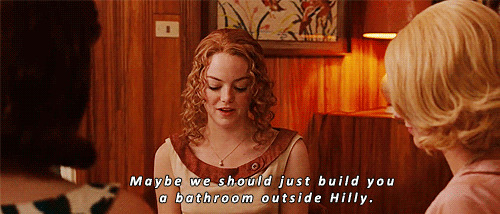
Throughout the movie we can also see the socioeconomic disparities when it comes to race. The fact that African American housekeepers mostly lived in the same lower-class neighborhood in Jackson, all catching the bus in the morning to take them to the upper-class, white neighborhoods where they worked. There is also a point where we see Minny preparing her eldest daughter for her first day of work as a housekeeper. Her daughter was pulled out of school to support the family financially.
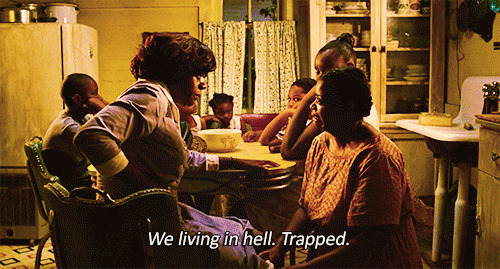
Although The Help focuses on race, there is quite a few instances of gender bias as well. We can see this clearly with Skeeter. When she comes home and applies to be a columnist at The Jackson Journal, she is given the Miss Myrna column to run – a column focused on housekeeping tips and tricks which is very fitting for what was considered to be a woman’s role during the time. In addition, Skeeter hasn’t had much experience in dating unlike her social peers who are already married with children. Throughout the movie there are subtle reminders that due to Skeeter’s choice to have a career, how she dresses/styles her hair, and her opinions make her an unlikely prospect for marriage. Skeeter seemingly has similarities with Peggy McIntosh, the author of “White Privilege: Unpacking the Invisible Knapsack” in which McIntosh references the understanding of white privilege by comparing it to her experience amongst men who do not realize their advantages. It seems as if Skeeter’s rejection of conformity to a 1960s homemaker and the fact that she was extremely close to her own family’s housekeeper, Constantine, allows her to see the unjust treatment of Black women of the time. Like McIntosh references in her article, it’s simply not enough to disapprove of the powers that keep systemic racism in place, people must work to dismantle them. Skeeter embodies the change she wishes to see by giving a voice to those whose voices have been suppressed by authoring the book The Help.
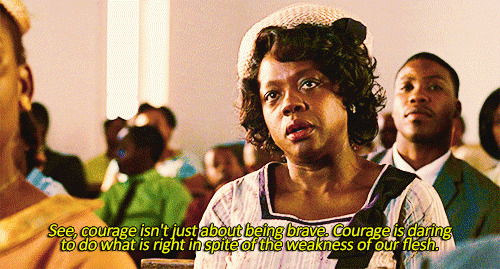
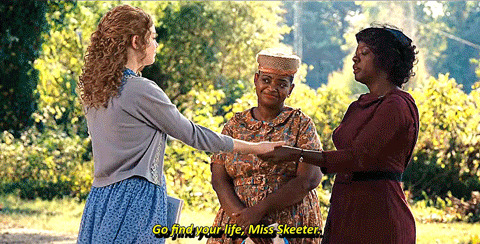
References
IMDb. “The Help (2011) - Plot - IMDb.” Www.imdb.com, www.imdb.com/title/tt1454029/plotsummary/.
Jay, Gregory. “Who Invented White People?” The Thomson Reader: Conversations in Context, by Robert P. Yagelski, Wadsworth Publishing, Jan. 2006, pp. 96–102.
McIntosh, Peggy. “‘White Privilege: Unpacking the Invisible Knapsack’ and ‘Some Notes for Facilitators.’” National SEED Project, 2010, www.nationalseedproject.org/key-seed-texts/white-privilege-unpacking-the-invisible-knapsack.
0 notes
Text
Lane, who has studied the above writers extensively, also reflects this view. He writes that this mystical spirituality and spiritual direction was grounded in epikistasis, an endless desire for God. It is an infinite ‘straining forward to what lies ahead’ that is alluded to in Philippians 3:13.
In Gregory’s conception of mystical desire, the excess of God’s being, insofar as it is utterly incomprehensible, results in a subject engaged in perpetual discovery. So, even after death, there is only ever a ‘satisfed dissatisfaction’. From this perspective, we can see that these early writers did not perceive desire solely as affective fulfillment. Instead, they understood that it had an ontological status linked to broader cosmology. Desire was caught up with the whole person and not just an affective part of the person.
Both McIntosh and Lane suggest that desire was an expression of the inherent incompleteness of our entire existence and that each action, whether this is intellectual, emotional, or physical, is ultimately incomplete and thus signals its relation to the infinite.
The Direction of Desire Mark Gerard Murphy
1 note
·
View note
Text
Black Lives Matter social media
the subject of my social media selection is the Black Lives Matter social media account (Blklivesmatter). Black Lives Matter is a decentralized political and social movement that seeks to highlight racism, discrimination, and racial inequality experienced by black people, and promote anti-racism. Its primary concerns are incidents of police brutality and racially motivated violence against black people. I chose this social media because it relates to our topic in class about the civil rights movement. a nationwide movement for equal rights for African Americans and for an end to racial segregation and exclusion arose across the United States. by how the " March on Milwaukee " contributed to the national fight for civil rights for African - Americans and to passage of the federal fair housing act in 1968. Like an example of this is in our week 4 articles with the articles titled Richard Dryer , " on the Matter of Whiteness " and Peggy McIntosh " white privilege : unpacking the invisible knapsack" , and Peggy McIntosh " white privilege checklist". Black Lives Matter is a protestested social group demanding the police and kkk afilliates to stop killing the black community just because they have a dark skin tone. Police and the whites were killing these African American's for the wrongful reasons. an example of this is in Minnesota where a man named George Floyd was wrongfully accused and a police officer kneeled on his face and he was telling the officer " I can't breathe". In addition there was a teenager named Trayvon Martin who was just eating skittles with his hood up and gets fatally shot and murrdered for no reason at all. What I mean by white privilege is that the whites are more superior than any other color. An example would be Emmitt Till and how was brutal murdered and hunted by the neck for whistling at a white lady. Black Lives Matter also relates to week 7 African Americans pdf. Like I said before Black Lives Matter is a group that wants justice for the whites wrongful actions and the civil rights movement had no say in anything. the African American wasn't always like this with the 13th amendment in 1865 with slavery being abandoned and the 14th amendment in 1868 were all slaves were granted citizenship in the great migration. In week 1 race and ethnicity with the articles titled Gregory Jay, "what is multiculturalism" with how the world was segregated. It was the black community vs the white community in this battle for equality. Blacks couldn't do things that the whites couldn't do like drink out the same butler , and eat at certain spots at restraints and justice just wasn't equal to the African community.
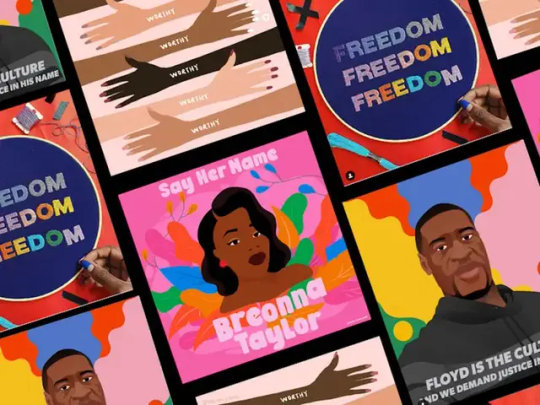
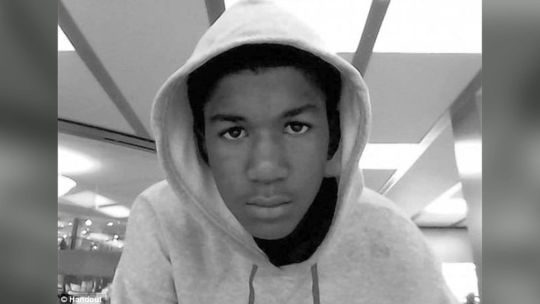

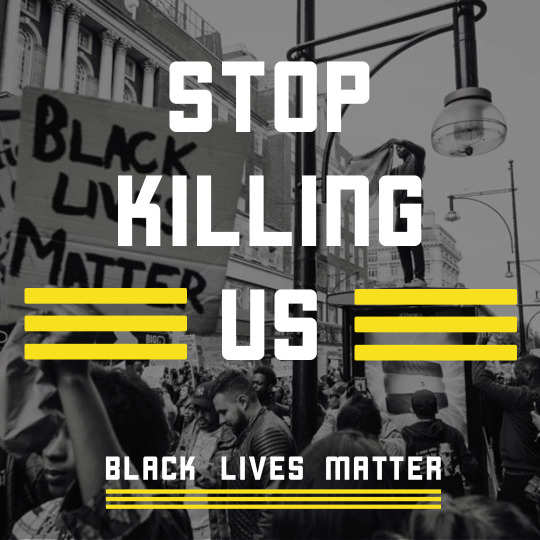
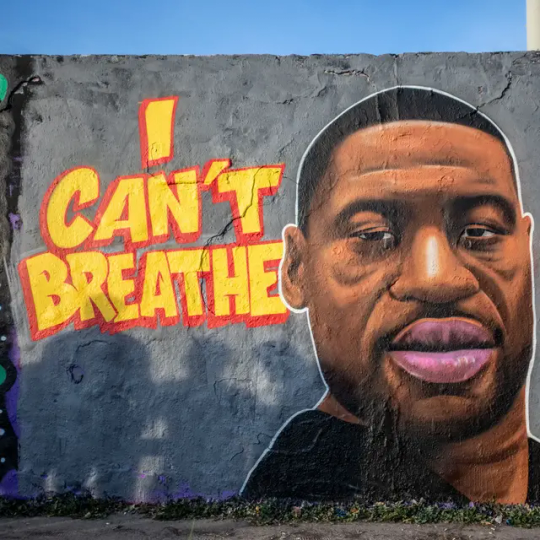




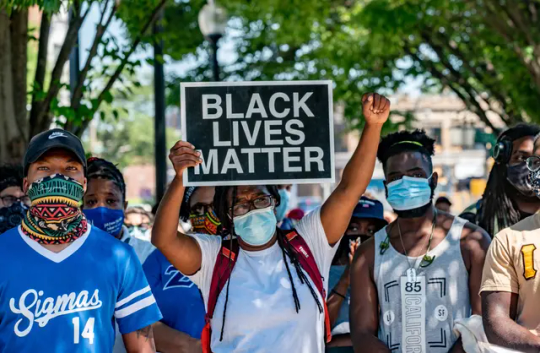
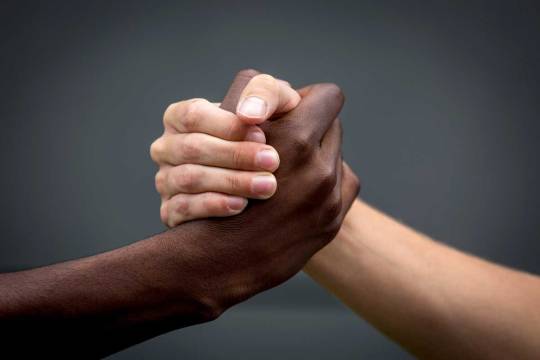
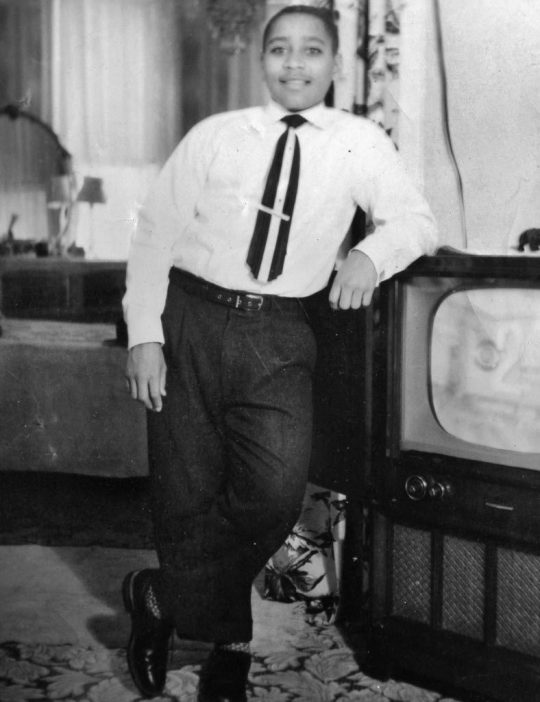
Dyer.pdf
white-privilege.pdf
whatismc.pdf
Week 7 African Americans.pdf
0 notes
Text
oc masterlist — drama media

𝟗𝟏𝟏.
name: bowie forrester. fic: ho hey. pronouns: he/him. ship: evan “buck” buckley + eddie diaz. faceclaim: okierete onaodowan.

𝐛𝐫𝐢𝐝𝐠𝐞𝐫𝐭𝐨𝐧.
name: aurelia “lia” norrington. fic: claire de lune. pronouns: she/her. ship: eloise bridgerton + penelope featherington. faceclaim: saoirse ronan.
name: elizabeth “eliza” norrington. fic: claire de lune. pronouns: she/her. ship: anthony bridgerton. faceclaim: ellise chappell.
name: genevieve norrington. fic: claire de lune. pronouns: she/her. ship: simon basset. faceclaim: emma watson.

𝐨𝐧𝐞 𝐜𝐡𝐢𝐜𝐚𝐠𝐨 𝐮𝐧𝐢𝐯𝐞𝐫𝐬𝐞.
name: wyatt friedman. fic: chasing cars. pronouns: he/him. ship: kelly severide. faceclaim: jake borelli.

𝐜𝐫𝐢𝐦𝐢𝐧𝐚𝐥 𝐦𝐢𝐧𝐝𝐬.
name: edward “eddie” baker. fic: should i stay or should i go. pronouns: he/him. ship: aaron hotchner. faceclaim: elden henson.
name: elias “eli” logan. fic: as the world caves in. pronouns: he/him. ship: spencer reid. faceclaim: tom hardy.
name: briar malcolm. fic: writer in the dark. pronouns: he/him. ship: derek morgan. faceclaim: eric winter.

𝐡𝐨𝐮𝐬𝐞 𝐦𝐝.
name: dr. lillian “lily” kang. fic: such great heights. pronouns: she/her. ship: gregory house + james wilson. faceclaim: sandra oh.

𝐨𝐮𝐭𝐞𝐫 𝐛𝐚𝐧𝐤𝐬.
name: august cullen. fic: somebody to you. pronouns: she/her. ship: sarah cameron. faceclaim: ella purnell.
name: callum tanaka. fic: sparks fly. pronouns: he/him. ship: jj maybank. faceclaim: darren barnet.

𝐭𝐡𝐞 𝐨𝐮𝐭𝐬𝐢𝐝𝐞𝐫𝐬.
name: bird mcintosh. fic: golden slumbers. pronouns: she/her. ship: dallas winston. faceclaim: rowan blanchard.
name: lake mcintosh. fic: golden slumbers. pronouns: he/him. ship: sodapop curtis. faceclaim: anthony turpel.

𝐫𝐢𝐯𝐞𝐫𝐝𝐚𝐥𝐞.
name: drew phillipa. fic: head over heels. pronouns: he/him. ship: fangs fogarty. faceclaim: thomas weatherall.

3 notes
·
View notes
Text
Multimedia Journal 2

“3rd Rock From the Sun.” IMBD, https://www.imdb.com/title/tt0115082/
The show that I chose for my second Multimedia Journal is 3rd Rock from the Sun, a sitcom from the 90s about aliens that come to Earth and try to live normal human lives. The human disguised aliens learn about various human norms and cultural experiences that help the audience gain an outside perspective about who we are as humans. Throughout the series, there are lots of episodes that discuss race, ethnicity, and whiteness.
dailymotion
Turner, Bonnie, et al. “Dick, Who's Coming to Dinner.” 3rd Rock From the Sun, season 5, episode 6, NBC, 23 Nov. 1999.
During season 5 episode 6 titled, “Dick, Who’s Coming to Dinner,” the main character, who is an alien disguised as an older white male, gets excluded from attending a black student union group. He does not understand why he is not allowed to attend and is offended. At first, he claims no contribution to the history of white population, but then he dives deeper and learns about the history of white oppression in the world. During his revelation that the history of whiteness is somewhat bad, his human friend says, “It’s not like you picked the color of your skin, right?” This is somewhat comical because when designing himself as a human, he picked to be a white male. This episode reminded me of our discussion of Peggy McIntosh’s “White Privilege: Unpacking the Invisible Knapsack,” along with Richard Dryer’s, “On the Matter of Whiteness.” These two writers discuss the privilege that Dick chose to have during the show. In McIntosh’s works, she discusses that men and white people are not conscious of their own oppressiveness. This directly relates to the show where Dick does not understand how he is oppressive, nor is the white population. Dryer speaks to how and what privilege gets you as a white person, and Dick realizes all the privilege he has during the episode.

“3rd Rock From the Sun.” IMBD, https://www.imdb.com/title/tt0115082/
Another moment of diversity occurs during season 1 episode 16, titled, “Dick Like Me,” when the group of aliens realize that they do not have an ethnic group. Throughout the episode they try to become various ethnic groups and try to act in different ways in relation to the different cultures. The aliens picked out the last name Solomon, which someone tells them that they might be Jewish, which lead them to their conclusion of ethnic groups. This reminded me of how we talked about mixed races during the semester. Just like how in Vin Diesel’s Multifacial, the Solomons are continuously told that they need to pick one ethnic group to be in. Although they have no background in any particular ethnic group, they have to only pick one. The short film by Diesel discusses how he is not completely black or completely Italian for various roles.

Diesel, Vin, director. Multifacial, https://www.youtube.com/watch?v=Gf4Ydp8CGk8.
This connection relates to how people determined that people can only fall into one group, not a variety of groups. Overall, 3rd Rock from the Sun has many moments throughout the entirety of the show that represent the cultural diversity, racial issues, and other problems that occur in America.
Diesel, Vin, director. Multifacial, https://www.youtube.com/watch?v=Gf4Ydp8CGk8.
Gregory Jay, "Who Invented White People" From Speech Given by Gregory Jay, http://www.uwm.edu/%7EgJay/Whiteness,Whitenesstalk.htm Reprinted by permission
Martin, Craig. “The Brilliance of Containing Whiteness.” Culture on the Edge, 1 Nov. 2019, https://edge.ua.edu/craig-martin/the-brilliance-of-containing-whiteness/.
McIntosh, Peggy. White Privilege: Unpacking the Invisible Knapsack.
1 note
·
View note
Text

43 notes
·
View notes
Text
Sorted caps from seasons 1, 4, 5 & 7 of The Walking Dead.
Aaron - Ross Marquand - #5,400
Abraham - Michael Cudlitz - #6,900
Amy - Emma Bell - #2,600
Andrea - Laurie Holden - #11,600
Astrid - Brianna Venskus - #3,300
Beth - Emily Kinney - #12,600
Bob - Lawrence Gilliard, Jr. - #4,800
Carl - Chandler Riggs - #16,300
Carol - Melissa McBride - #28,000
Cyndie - Sydney Park - #2,100
Dale - Jeffrey DeMunn - #8,700
Daryl - Norman Reedus - #19,000
Dawn - Christine Woods - #2,600
Deanna - Tovah Feldshuh - #3,000
Dwight - Austin Amelio - #2,900
Eugene - Josh McDermitt - #13,100
Ezekiel - Khary Payton - #4,800
Gabriel - Seth Gilliam - #4,600
Glen - Steven Yeun - #19,000
Governor - David Morrissey - #9,400
Gregory - Xander Berkeley - #3,000
Hershel - Scott Wilson - #6,000
Jadis - Pollyana McIntosh - #1,800
Jenner - Noah Emmerich - #3,300
Jerry - Cooper Andrews - #900
Jesus - Tom Payne - #3,700
Jim - Andrew Rothenberg - #2,600
Joe - Jeff Kober - #1,600
Lily - Audrey Marie Anderson - #2,900
Lizzie - Brighton Sharbino - #5,000
Lori - Sarah Wayne Callies - #17,000
Maggie - Lauren Cohan - #17,000
Merl - Michael Rooker - #1,400
Michonne - Danai Gurira - #11,000
Mika - Kyla Kenedy - #5,000
Mitch - Kirk Acevedo - #1,100
Morgan - Lennie Michael James - #5,700
Negan - Jeffrey Dean Morgan - #14,100
Noah - Tyler James Williams - #2,500
Richard - Karl Makinen - #4,000
Rick - Andrew Lincoln - #69,000
Rosita - Christian Serratos - #10,000
Sasha - Sonequa Martin-Green - #16,500
Simon - steven Ogg - #2,500
Sophia - Madison Lintz - #1,300
Spencer - Austin Nichols - #3,000
Tara - Alanna Masterson - #15,000
T-Dog - IronE Singleton - #3,500
Tyreese - Chad Coleman - #8,800
This content is free for anyone to use or edit however you like; if you care to throw a dollar or two my way for time, effort, storage fees etc you are more than welcome to do so via my PAYPAL. Please like or reblog this post if you have found it useful or are downloading the content within. If you have any questions or you have any problems with the links or find any inconsistencies in the content, etc. please feel free to drop me a politely worded message via my ASKBOX ON MY RESOURCE BLOG (second icon from the top on my theme!)
#the walking dead#the walking dead caps#the walking dead screencaps#twd caps#twd screencaps#twd resources#the walking dead resources#emily kinney#chandler riggs#melissa mcbride#norman reedus#tom payne#ross marquand#andrew lincoln#sarah wayne callies#chad coleman#irone singleton#alanna masterson#austin nichols#madison lintz#steven ogg#sonequa martin green#christian serratos#karl makinen#tyler james williams#jeffrey dean morgan#lennie michael james#kirk acevedo#kyla kennedy#danai gurira
95 notes
·
View notes
Text
BlacKkKlansman

Spike Lee’s BlacKkKlansman (2018) is a biographical crime drama based on the story of Ron Stallworth, the first Black detective in the Colorado Springs police department. The film follows Stallworth as he infiltrates the Ku Klux Klan with the help of his Jewish colleague, Flip Zimmerman. Together, they expose the organization’s dangerous activities, revealing the persistence of systemic racism and white supremacy. The film blends historical references with contemporary racial commentary, emphasizing the parallels between the Klan’s ideology in the 1970s and modern hate groups. The narrative culminates with footage from the 2017 Charlottesville rally, directly linking past and present struggles against racial violence. The film’s critique of systemic power and privilege reflects themes from Gregory Jay’s “What is Multiculturalism,” which examines how race and ethnicity are socially constructed and wielded as tools of oppression. Similarly, the film echoes Richard Dyer’s “On the Matter of Whiteness,” exposing how whiteness operates as the unmarked racial norm that perpetuates dominance in society.
Racial and ethnic identities are central to BlacKkKlansman. The narrative highlights how Stallworth navigates systemic racism within his police department and society at large, using his position as a detective to challenge the Klan’s ideology. The film also explores the intersectionality of race and religion through Flip Zimmerman, who faces antisemitism during the investigation. This portrayal reflects Peggy McIntosh’s “White Privilege Checklist,” as it uncovers how whiteness affords the Klan members systemic advantages, from economic stability to institutional protection. Antonio Lopez’s “Circling the Cross” is also relevant, as Stallworth uses his position and media tactics to bridge activism and institutional reform, subverting the racial narratives perpetuated by the Klan. Through its characters, the film interrogates the privileges of whiteness and the marginalization of identities that deviate from this norm.

The visual strategies in BlacKkKlansman reinforce its themes. Spike Lee juxtaposes Black empowerment with scenes of Klan gatherings to critique the normalization of white supremacy and celebrate Black resistance. For instance, a scene depicting a Black student union rally contrasts sharply with a Klan meeting, emphasizing the ideological divides between these groups. This aligns with Sturken and Cartwright’s Practices of Looking, which examines how visual media constructs and critiques power structures. The film also engages intersectionality, exploring how identities such as race, religion, and class intersect within systems of oppression. These themes reflect Chela Sandoval’s “Chicana/o Artivism,” as the film serves as a form of resistance, using storytelling to amplify marginalized voices and dismantle dominant racial narratives.

By integrating historical footage from Charlottesville, BlacKkKlansman connects past and present racial tensions. The inclusion of this footage reminds viewers that the fight against white supremacy is ongoing, fostering a sense of urgency. The film critiques the normalization of whiteness, as discussed by McIntosh and Dyer, and examines how visual media perpetuates and challenges racial hierarchies. Spike Lee’s narrative and stylistic choices make BlacKkKlansman a powerful commentary on the representation and circulation of racial identities in visual culture.
Works Cited
Dyer, Richard. "On the Matter of Whiteness." White: Essays on Race and Culture. Routledge, 1997.
Colorlines. "Ron Stallworth Infiltrates the KKK in 'BlacKkKlansman' Trailer." Colorlines, https://colorlines.com/article/ron-stallworth-infiltrates-kkk-blackkklansman-trailer/. Accessed 8 Dec. 2024.
Focus Features. "Ron Stallworth: Who’s Who in BlacKkKlansman." Focus Features, https://www.focusfeatures.com/article/ron-stallworth_whos-who_blackkklansman. Accessed 8 Dec. 2024.
IMDb. BlacKkKlansman. IMDb, https://www.imdb.com/title/tt7349662/. Accessed 8 Dec. 2024.
Lopez, Antonio. "Circling the Cross: Bridging Native America, Education and Digital Media." [PDF].
Jay, Gregory. "What is Multiculturalism." [PDF]. Lee, Spike, director. BlacKkKlansman. Focus Features, 2018. McIntosh, Peggy. "White Privilege Checklist." [PDF]. Sturken, Marita, and Lisa Cartwright. Practices of Looking: Images, Power, and Politics. Oxford UP, 2001.
0 notes
Photo






The Walking Dead Season 8 Portraits - Set 2.
#twd season 8#the walking dead season 8#twd s8#amc twd#twd amc#amc the walking dead#the walking dead amc#father gabriel#gabriel the walking dead#jadis the walking dead#eugene the walking dead#ezekiel the walking dead#king ezekiel#gregory the walking dead#paul rovia#paul monroe#jesus the walking dead#seth gilliam#pollyanna mcintosh#josh mcdermitt#khary payton#xander berkeley#tom payne#we are the walking dead
17 notes
·
View notes
Text
I was tagged by @hrwinter @battenthecrosshatches and @nevertobeships to share five books I want to read this year! <3333 thanks friends
1. The Women of the Counsins’ War: The Duchess, the Queen, and the King’s Mother by Philippa Gregory, David Baldwin and Michael Jones
2. Women of the OSS: Sisterhood of Spies by Elizabeth P McIntosh
3. The Falcon Thief by Joshua Hammer (I technically started this one last year as a rec from @i-am-robie, but I just really truly struggled to get into reading last year. fingers crossed this year is better bc I really want to read this book)
4. The Lost Apothecary by Sarah Penner
5. The Priory of the Orange Tree by Samantha Shannon
6. The Lost Girls of Paris by Pam Jenoff (Yes I know I said 5, but I added a 6th so there were 3 non-fction and 3 fiction in case people were reading these to get ideas and they don’t like non-fiction)
tagging @oreoambitions @roseticospacebae @deadbiwrites @spaceman-earthgirl @fireladybuckley @sheltereredturtle
#three tags?? way to make a girl feel loved#y'all#the stack of books I got for christmas this year and for my birthday the year before that#is getting BIG#and it is haunting me bc all I want to do is read#but my brain is just like#no 🙃
16 notes
·
View notes